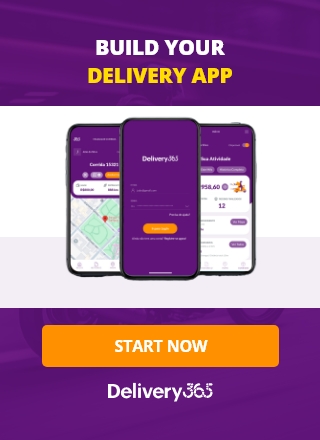6 most popular payment methods for ecommerce
Offering different payment methods in e-commerce is a great way to avoid cart abandonment and encourage the customer to complete the purchase.
If in the past credit cards were the only option accepted by many online stores, today there are several payment methods that buyers prefer to use.

Why provide different payment methods in ecommerce?
To serve a wider range of customers and get more conversions, it’s important to let everyone choose their preferred payment methods.
Since the different online payment systems have distinct billing rates and unique mechanisms for transacting, providing alternatives will allow you to sell to mixed demographics and serve the largest target audience possible.
Remembering that the checkout is an essential stage of your sales funnel, since conversion happens at this stage, it is crucial to make the shopping experience as easily as possible.
– 5 ways to improve the checkout process
If you are starting an e-commerce, pay attention to the following:
- Consider your target audience’s needs and habits when deciding which payment methods to offer, as habits change across cultures, countries, and demographics.
- Offering varied options of online payment methods will help you avoid high cart abandonment rates.
- Security is the main factor considered by 44% of customers when choosing an online payment method. (Paysafe, Consumer Payment Trends 2021)
– How to ensure security in e-commerce
6 best and most popular payment methods in ecommerce
Although credit cards are still a very popular option among online buyers, other forms of payment have been gaining the public’s and stores’ preference as well, as is the case with BNPL.
See below the most popular online payment methods today:
1. Credit Card
Easy and safe to use, your high popularity in online shopping It’s no surprise. After all, consumers only need to enter their card details to complete the purchase of products at checkout.
CVV, short for Card Verification Value, is what makes credit cards also a very safe option. Companies can detect fraud by comparing cardholder information and CVV numbers.
In addition, buyers also take the opportunity to take advantage of its extra features, such as discounts and rewards programs.
All these advantages justify why credit cards remain one of the most used online payment methods, despite having numerous innovative competitors.
– How to use a loyalty program to retain customers
2. Debit Card
Due to the wide accessibility of this payment method, it has a high potential for attracting users and can increase conversion rates.
Another advantage is the ease of use and real-time payment confirmation.
This option serves people who do not have a credit card or prefer to carry out all their debit purchases, as a form of greater financial control.
According to a 2023 survey, debit cards accounted for approximately 30% of all payments, while credit cards accounted for 32%.
3. Buy Now, Pay Later (BNPL)
BNPL is a payment method that allows consumers to pay for purchases in installments without needing a traditional credit card.
It works as a short-term financing, usually interest-free, as long as payments are made within the agreed period.
Depending on the service, the buyer can divide the purchase price into 4 interest-free installments or opt for longer plans, which may have additional fees.
Approval is often quick without the need for a strict credit check, which makes this one of the most accessible payment methods today.
According to researchers, the BNPL model, despite maintaining a low market share, will continue defending its position as we reach 2027.
BNPL leaders, like Affirm or Klarna, have reported good returns in their quarterly reports (Worldpay, 2024).
4. Wallets
Electronic Wallets, also called Wallets or Digital Wallets, are one of the most agile online payment methods on the market today.
According to a recent report, digital wallets emerged as the most popular online payment method in the US in 2023, constituting 37% of the total online transaction value.
With popular solutions like Venmo, Apple Pay and Google Pay, the share of digital wallet payments is expected to surge to 52% in 2027, indicating a significant shift in consumer behavior toward this mode of payment, especially among younger people, used to do shopping via smartphone.
After linking their bank account to a Wallet, if users choose to pay online, they are directed to the e-wallet page and simply enter their password to complete the purchase.
By eliminating the need to enter credentials and credit/debit card information every time you want to buy something online, Wallets have gained favor in the North American market.
5. Payment Gateways
Payment gateways are e-commerce business services for buyers that process credit/debit card payments.
The first examples of payment gateways were the native systems that individual e-commerce services designed.
When the number of eCommerce stores and online shoppers increased, these native systems had to convert to more standardized platforms for more merchants to use them simultaneously.
Today, the eCommerce industry is filled with a vast array of payment gateway providers that generate fast and secure links between buyers, merchants and banks.
As competition is strong, these services can be expensive initially. Still, even though the cost of implementing and maintaining them on your website is high, the return on investment will likely be satisfactory.
There are dozens of great payment gateways like PayPal, Square, and Stripe, and new ones are emerging every day.
6. Bank Transfers (ACH Payments)
Bank Transfers (ACH Payments) are electronic money transfers between bank accounts in the United States, processed by the system Automated Clearing House (ACH).
This method is widely used for bill payments, direct salary deposits, and online purchases, especially for high-value or recurring transactions, since transactions require direct authorization, reducing the risk of fraud and chargebacks.
Platforms like Plaid, Dwolla and Stripe ACH facilitate the integration of ACH payments for businesses and consumers.
One downside is that compared to credit cards or PayPal, ACH transfers can take a few days to complete.
Offer different payment options to your customers and sell more

To have a large customer base, you must ensure that your ecommerce store is convenient for all of them.
People do not have the same preferences when it comes to shopping online and retailers must be aware of their target audience’s needs and wants, offering suitable options.
This is why you should consider adding different payment methods to your eCommerce store. The same applies when we talk about product delivery.
It is recommended that companies offer as many shipping alternatives as possible to win more sales and increase their conversion rates.
– 4 shipping options for e-commerce
You can do this by relying on a broad base of delivery people, which you have access to when opening your e-commerce on Delivery 365 app.
Specialized in e-commerce, the Delivery365 app has tracking technology, online freight quote system, methods for receiving online payment and much more.
With a base of hundreds of registered couriers, it is a true revolution in delivery!
Visit our website, create your e-commerce and start selling online now.


